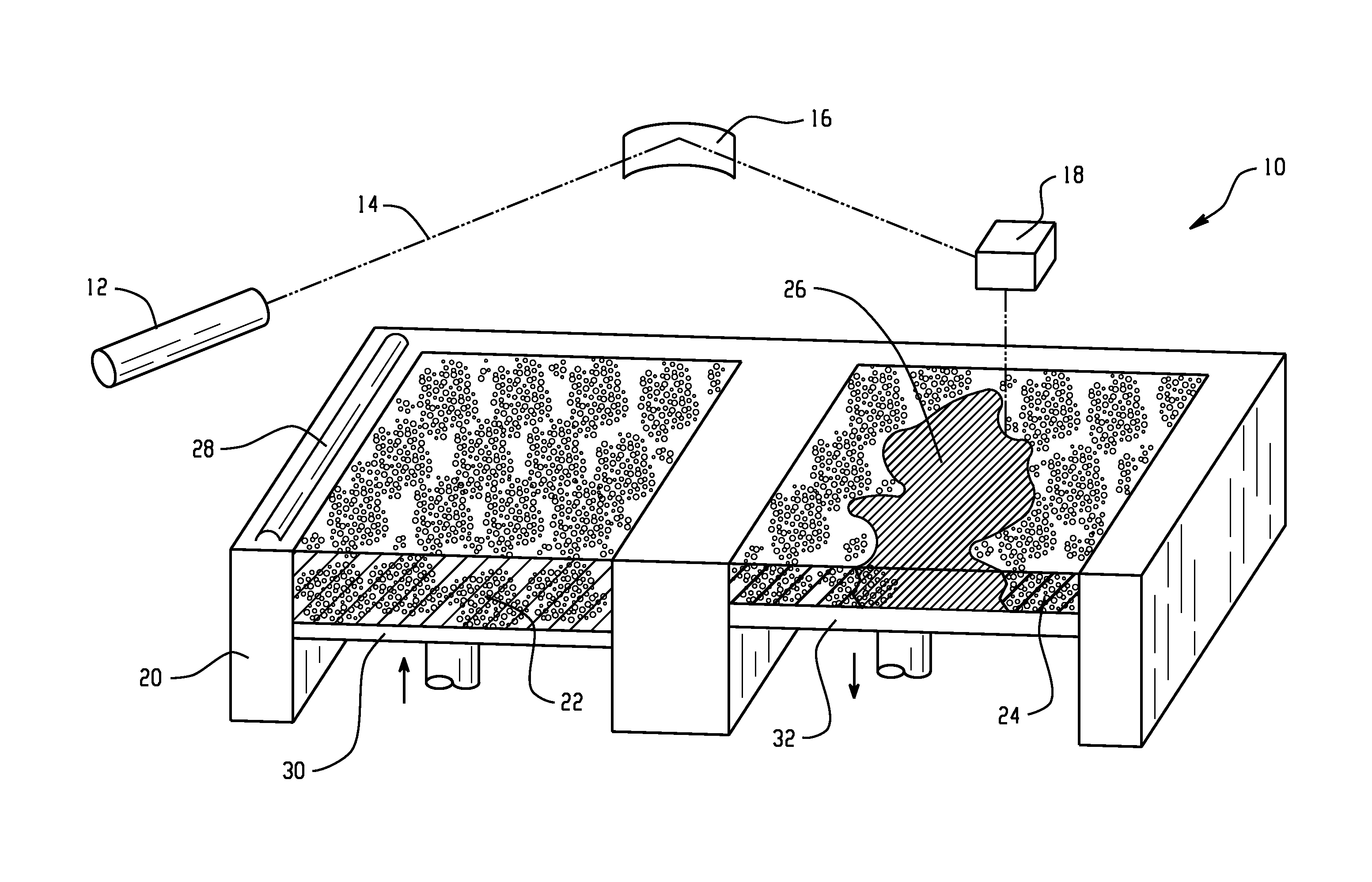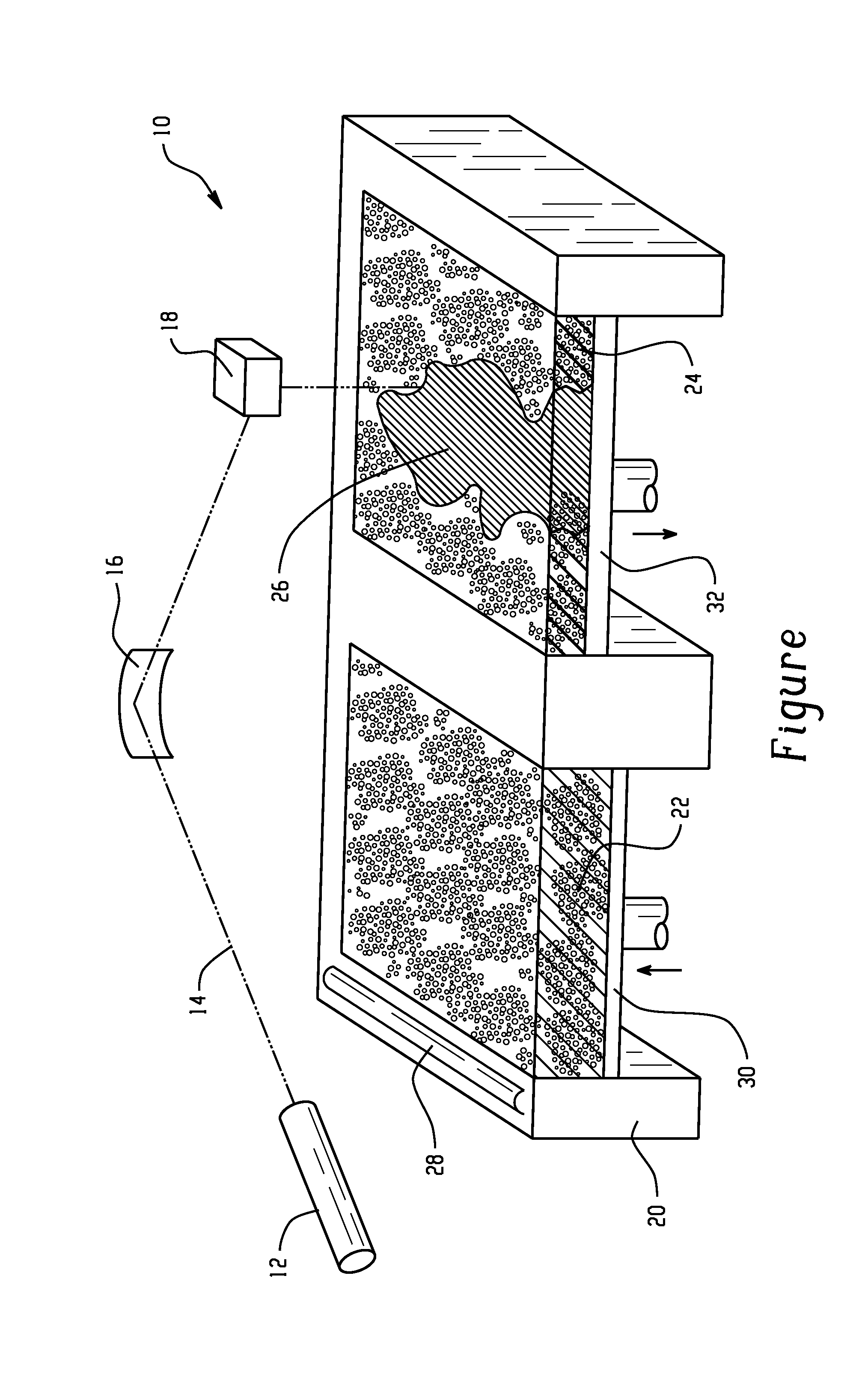Method of manufacturing aluminum alloy articles
- Summary
- Abstract
- Description
- Claims
- Application Information
AI Technical Summary
Benefits of technology
Problems solved by technology
Method used
Image
Examples
Embodiment Construction
[0010]Referring now to the FIGURE, an example of an additive manufacturing system or apparatus 10 includes energy source 12 that generates an energy beam 14, a first mirror or other optical guide 16, a second mirror or optical guide 18, a frame 20, a powder supply 22, a powder processing bed 24, sintered powder material 26, a spreader 28, a powder supply support 30, and a stack support 32. Of course, the illustration in the FIGURE is schematic in nature, and many alternative designs of additive manufacturing devices are possible. Various types of additive manufacturing materials, energy sources, and processes can be used to fabricate the air temperature sensor housing and the individual features thereof that are described herein. The type of additive manufacturing process used depends in part on the type of material out of which it is desired to manufacture the sensor housing. In some embodiments, the sensor housing is made of metal, and a metal-forming additive manufacturing proces...
PUM
| Property | Measurement | Unit |
|---|---|---|
| Weight | aaaaa | aaaaa |
| Molar ratio | aaaaa | aaaaa |
| Energy | aaaaa | aaaaa |
Abstract
Description
Claims
Application Information
 Login to View More
Login to View More - R&D
- Intellectual Property
- Life Sciences
- Materials
- Tech Scout
- Unparalleled Data Quality
- Higher Quality Content
- 60% Fewer Hallucinations
Browse by: Latest US Patents, China's latest patents, Technical Efficacy Thesaurus, Application Domain, Technology Topic, Popular Technical Reports.
© 2025 PatSnap. All rights reserved.Legal|Privacy policy|Modern Slavery Act Transparency Statement|Sitemap|About US| Contact US: help@patsnap.com


